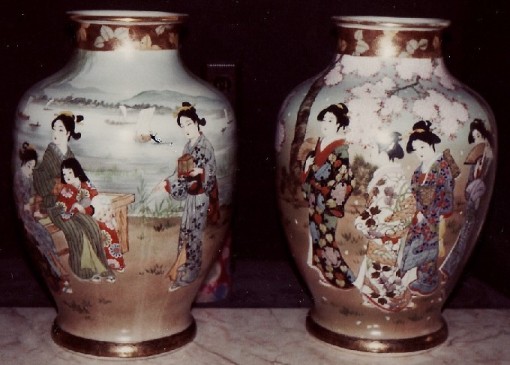
|
Subject:Re: Japanese Urns
Posted By: Emiko Thu, Jun 24, 2010
Kendra,
Yokohama-etsuke,( etsuke means painted ware),only color decoration(nishiki-gama) applied at the studios in Yokohama, was popular late Meiji up to around 1900�s, the same period, Nagoya makers prospered in their export business. 1923 Kanto earthquake seriously damaged most studios and the World War II pretty much wiped them out all. If you are seriously interested in more detail information, I would recommend contacting Kanagawa Museum in Japan. So many of these Yokohama-etsuke ware were produced for export, very little is known , although Yokohama-etsuke between 1880�s-1900�s has far more decorative value than later so-called Satsuma-ware, mass produced in Nagoya.
Best Regards,
Emiko
|
 Japanese Urns
Japanese Urns  ( China & Japan ) - Kendra - Jun 16, 2010 (11:22 AM)
( China & Japan ) - Kendra - Jun 16, 2010 (11:22 AM)  Re: Japanese Urns - Bill H - Jun 17, 2010 (02:59 AM)
Re: Japanese Urns - Bill H - Jun 17, 2010 (02:59 AM)  Re: Japanese Urns - Arjan - Jun 17, 2010 (04:22 AM)
Re: Japanese Urns - Arjan - Jun 17, 2010 (04:22 AM)  Re: Japanese Urns - Emiko - Jun 18, 2010 (12:01 PM)
Re: Japanese Urns - Emiko - Jun 18, 2010 (12:01 PM)  Re: Japanese Urns - Kendra - Jun 23, 2010 (03:22 PM)
Re: Japanese Urns - Kendra - Jun 23, 2010 (03:22 PM)  Re: Japanese Urns - Emiko - Jun 24, 2010 (08:19 AM)
Re: Japanese Urns - Emiko - Jun 24, 2010 (08:19 AM) 